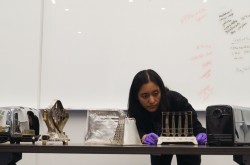Inventor of the American Beauty Industry
This article was originally written and submitted as part of a Canada 150 Project, the Innovation Storybook, to crowdsource stories of Canadian innovation with partners across Canada. The content has since been migrated to Ingenium’s Channel, a digital hub featuring curated content related to science, technology and innovation.
Elizabeth Arden is credited with introducing North American women to eye make-up, a concept almost unheard of in the early 1900s. She is also renowned for making the wearing of cosmetics respectable at a time when only stage performers and women of “ill-repute” indulged. Arden invented a number of skin products, including foundation to match skin tones, and a softening cream originally developed for her famous race horses. Some fashion historians contend that the American beauty industry itself was an Elizabeth Arden creation.
Florence Nightingale Graham was born on a farm near Woodbridge, Ontario on New Year’s Eve, 1878. By 1910, she had made her way to New York where she opened a Fifth Avenue salon that would become the basis of a world-wide beauty empire. Florence started out in New York City doing bookkeeping for a pharmaceutical company and then moved on to learning about skin care in its labs. Once she gained some front-line experience with clients in a local beauty parlour, Florence Graham was ready to set up her own establishment — and gave herself a new signature to go with it. Elizabeth Arden soon became a household name. She worked with a chemist to concoct a line of cosmetics and travelled to Paris to learn the latest massage and make-up techniques. She then developed her extraordinary marketing skills to sell her products and services to a waiting and willing audience of women on both sides of the Atlantic. By 1938, Fortune magazine speculated she was the highest grossing female money-earner in U.S. history. A decade later she appeared on the cover of Time magazine, and by the end of her life in 1966 had earned millions of dollars as well as an honorary doctorate and the French Legion of Honour.
















